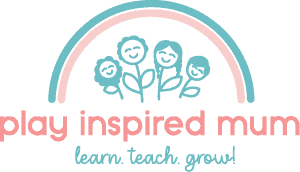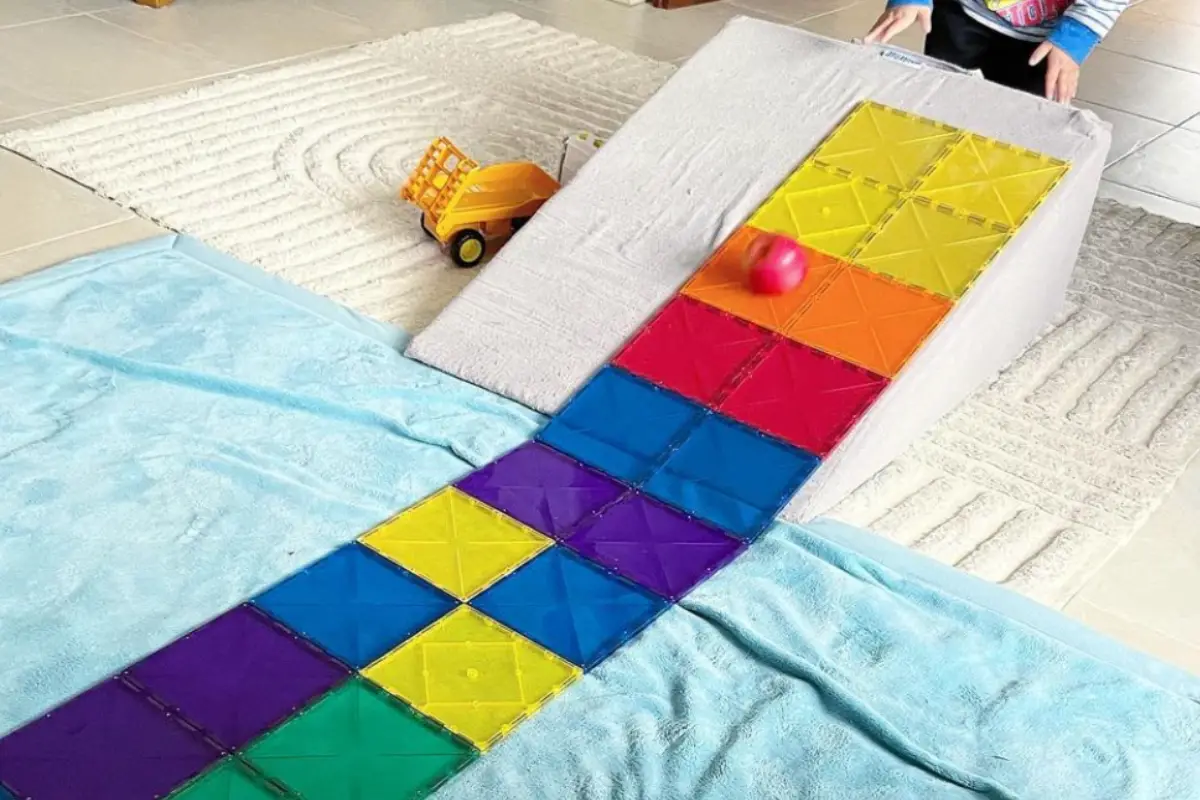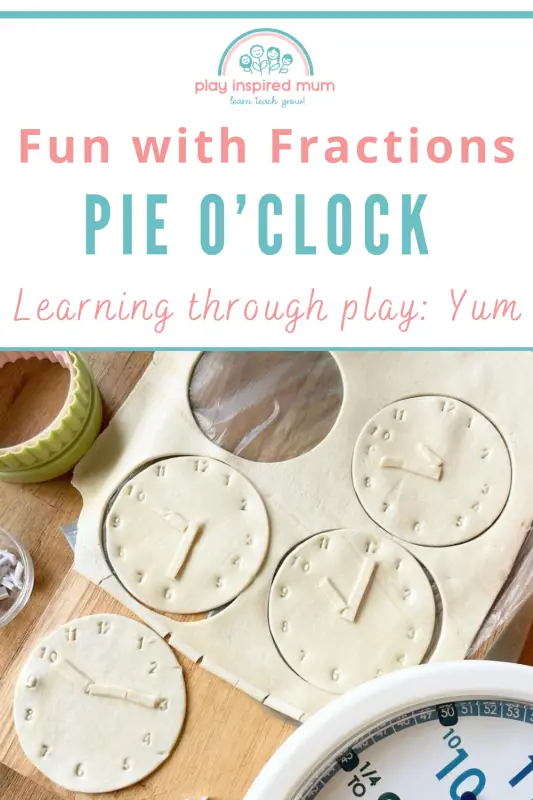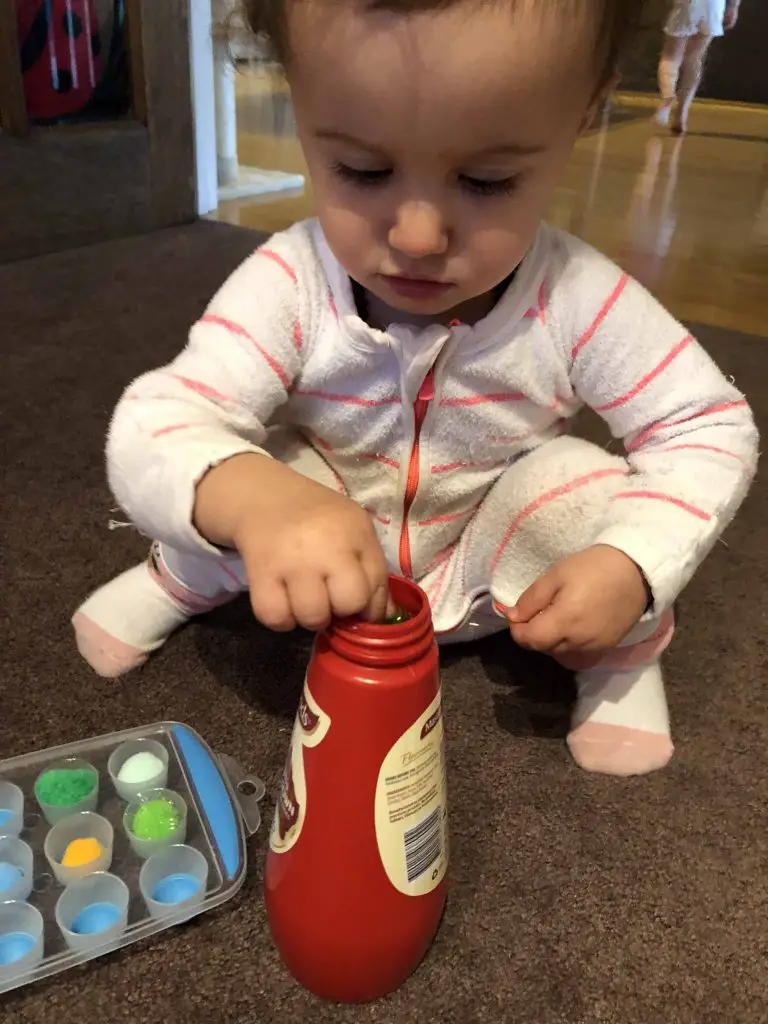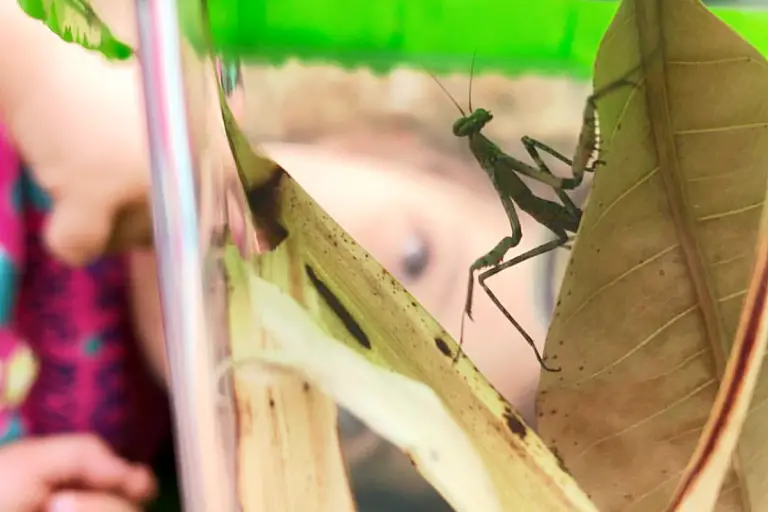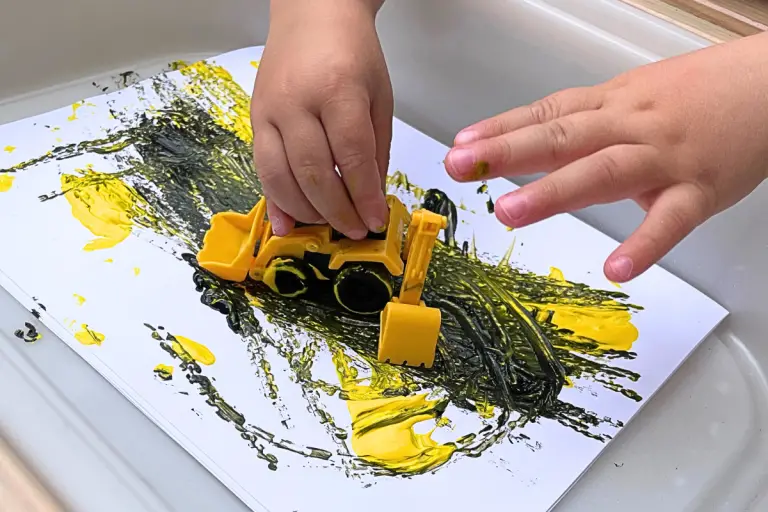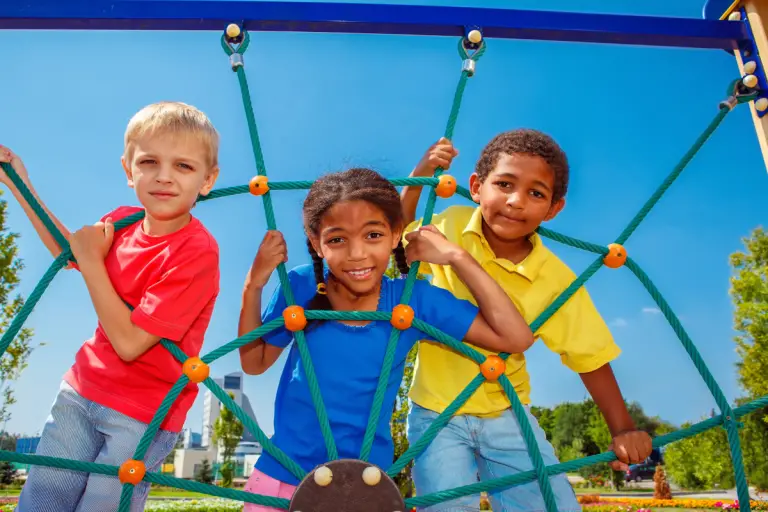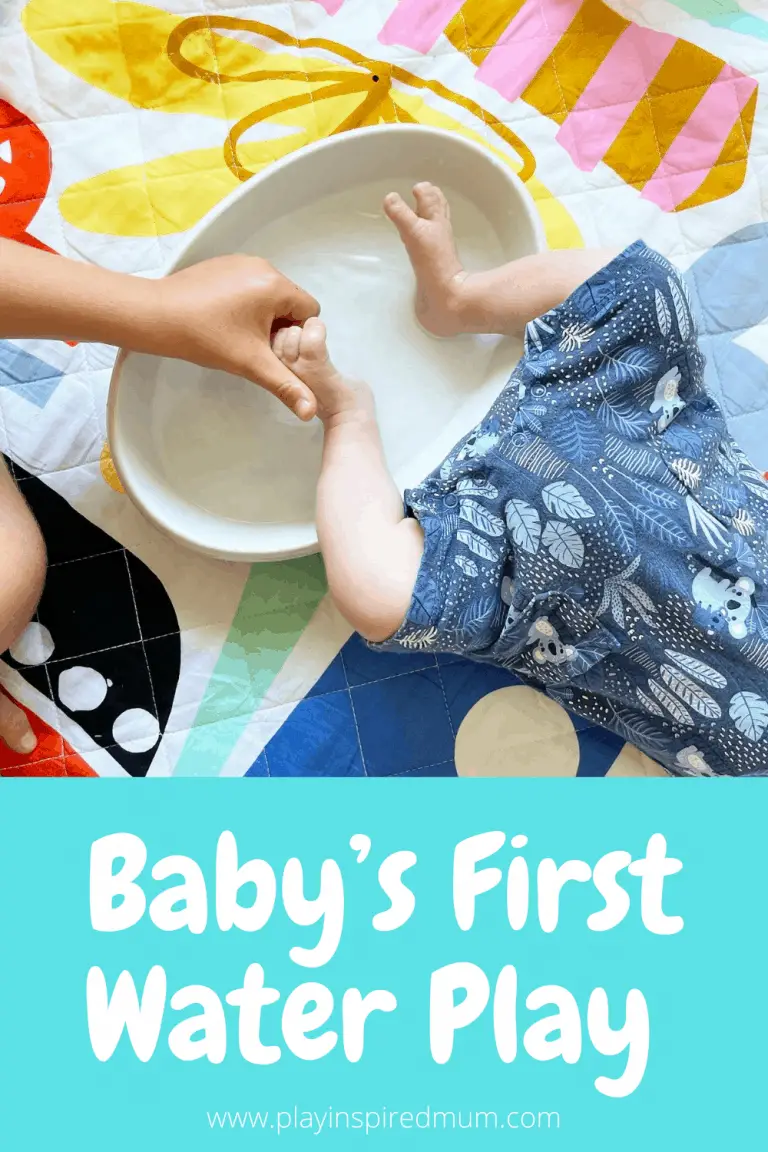Rolling into Fun: Apple Activities for Young Learners
Disclosure: This blog contains affiliate links which I may earn a small commission from if you purchase through them, at no extra cost to you.
Have fun exploring cause and effect with your toddler, rolling apples.
Yup, apples.
The first time we tried this activity was years ago and it was as much a hit then as it is now.
The kids love it!
The apples roll in unpredictable ways and there is something captivating watching them roll down the slopes.
Learn how to make small adjustments to optimise the learning through play opportunities this activity can present.
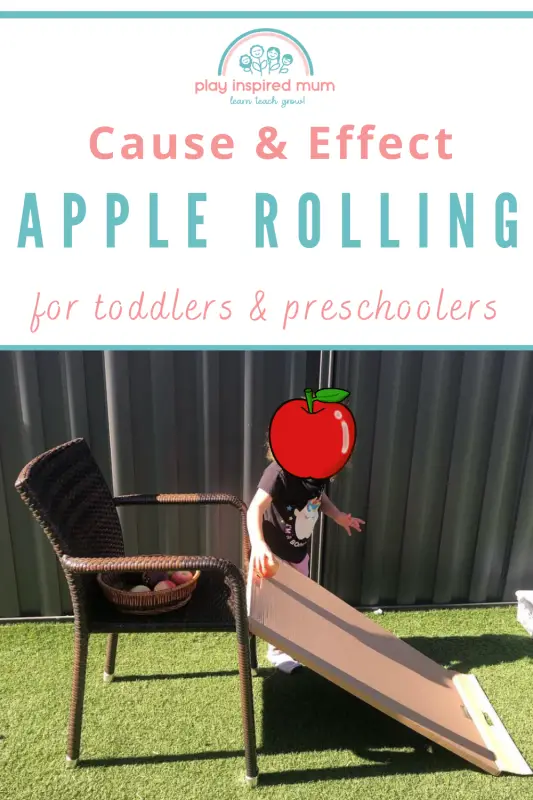
Apple Rolling Activities
Imagine toddlers and preschoolers’ eyes lighting up as they watch apples roll and bounce.
Gone are the days of ‘don’t play with your food’.
Apples offer many sensory elements that balls just can’t rival with.
I remember the first time Mr 3 was introduced to apple rolling.
He looked confused as I pulled our Whatsie wedge to the middle of the room and gathered a basket of apples from the fridge.
He had become quite attached to these apples after doing colour sorting with them earlier.
Apple rolling was a further extension to our apple themed activities for the week.
These activities aren’t just about fun.
They’re a brilliant blend of learning through play, science with kids, and sparking curiosity about cause and effect learning.
Apple rolling can be an easy play idea, yet it’s rich with opportunities for young learners to explore experimental play, making predictions, and even simple physics.
It’s fascinating to see how integrating something as simple as an apple can transform into a learning experience, guiding toddlers and preschoolers through the basics of play based learning while they think it’s all just play.
Benefits of Learning Through Play
I discovered that apple rolling unlocked a world of educational prospects for young learners.
In particular, the realms of cause and effect learning and making predictions.
As we sent apples rolling down ramps we constructed from our Whatsie play couch, Mr 3 wasn’t just engaging in a simple play idea.
He was stepping into a foundational science with a kids experiment.
Observing the effects of different inclines on the apple’s speed taught them about cause and effect in real time.
We further expanded the learning experience by encouraging predictions about which apple would roll the fastest or farthest.
This not only added an element of experimental play but also refined their ability to hypothesize and understand outcomes.
These apple rolling activities offered an interactive and fun introduction to basic scientific principles and reasoning skills.
Another success proving that learning through play is a powerful avenue for exploration and discovery.
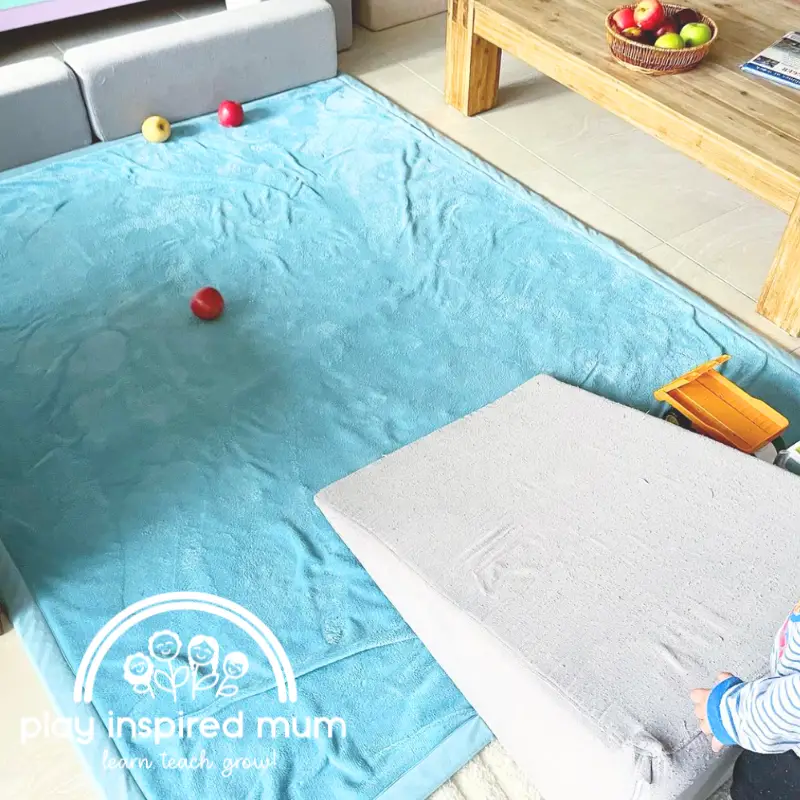
Setting Up Your Apple Rolling Station
I had always found joy in blending learning with play.
Even more when it involved a dash of experimental play and a pinch of science with kids.
That’s why I gravitated towards apple rolling activities, a simple play idea that promised fun and education in equal measure.
For setting up our apple rolling station, the materials list was surprisingly short, making the preparation work a breeze.
We would need a few apples, ideally of different sizes for making predictions on their rolling speeds, and a makeshift ramp.
The Whatsie play couch had proven itself as more than just a comfy spot for storytime.
We sued our wedge cushion to create the perfect incline for our apple adventures.
The arm rests and back rests were then positioned to create our bumper barriers to keep apples from rolling off the mat and under the furniture.
In the past we have made a ramp using a chair and piece of cardboard.
Get creative and use what you have at home to make your perfect slope.
This activity was not only easy to set up but also versatile, opening doors to various learning opportunities through play.
Incorporating the Whatsie Play Couch
We love our Whatsie for play and today was no exemption.
This couch, usually a hub for toddler play ideas, turned into the perfect accessory for our apple rolling activities.
This setup not only spurred excitement but also allowed us to delve into experimental play.
It became a cause and effect learning opportunity as we made predictions about how fast or far the apples would roll.
The versatility of the play couch was truly showcased.
We transformed it from a cozy reading nook in one moment to an adventurous rolling landscape the next.
This simple play idea became a lesson in physics for my eager young scientist.
Through laughter and cheers, we explored concepts like gravity and velocity, making learning through play an absorbing adventure.
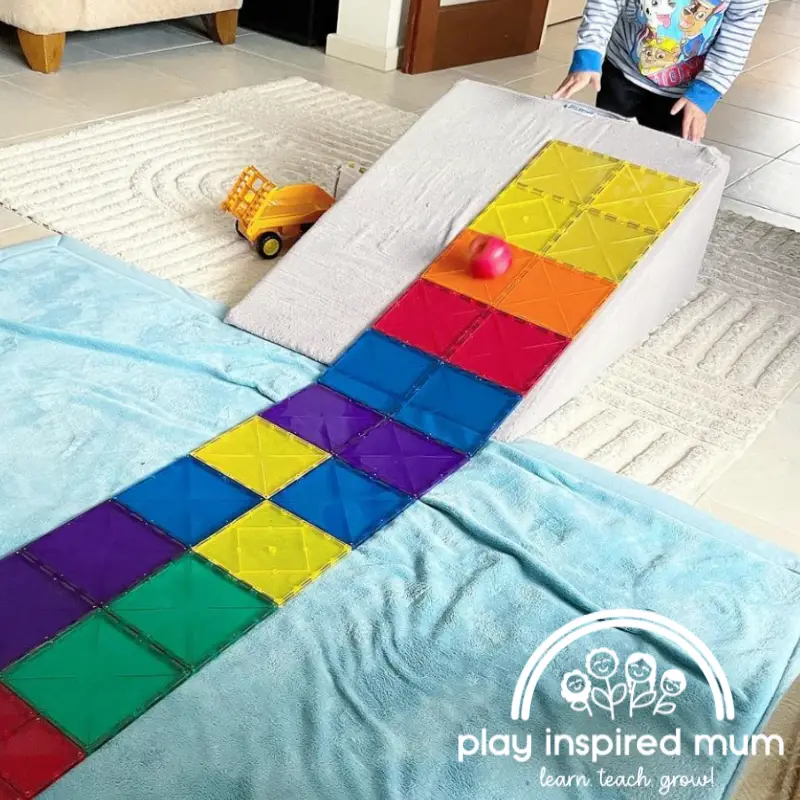
Guiding Your Child Through the Activity
I eagerly set up an experimental play zone in our living room, transforming our Whatsie play couch into a gentle slope.
This was not just a simple play idea but also an effective and engaging one.
I showed my toddler how we could make predictions about which apple would roll the fastest.
We discussed the cause and effect learning evident in our setup.
I advised using different varieties of apples to see if their sizes or weights influenced how they rolled.
This method encouraged my child to think critically, predicting the outcome before each roll.
Incorporating learning through play, especially for toddlers and preschoolers, became a fruitful journey.
The apple rolling activity lent us a sweet spot between fun and education.
It was a reminder that simple play ideas, like this one, are gateways to broader explorations of science and nature.
Expanding the Activity: Colour and Number Learning
We’ve mastered the basics of apple rolling, and now it’s time for us to add more layers to the fun.
Incorporating learning elements such as colour matching and number counting significantly ramps up the educational value, making it ideal for both toddlers and preschoolers.
As parents and educators, we can guide young minds to explore cause and effect learning, science with kids, and making predictions in the most engaging ways.
By setting up a simple play idea with these added elements, children can roll apples down ramps, eagerly watching to see which colour reaches the bottom first or counting the number of rolls it takes for each apple to stop.
This method of play-based learning not only strengthens their understanding of colours and numbers but also introduces them to experimental play and simple science principles.
I cherished observing how each child made predictions, eagerly engaging in learning through play—a testament to the fun and effectiveness of these easy play ideas.
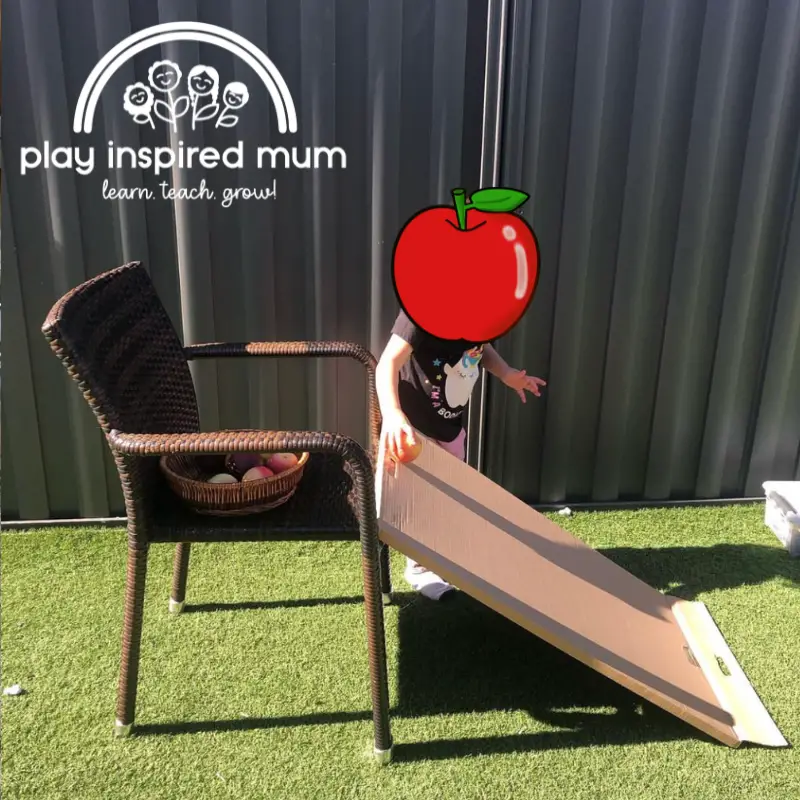
Apple-themed Snack Time
After a day filled with learning and fun, winding down with some apple-themed snacks feels like the perfect ending.
I found that creating these treats with toddlers and preschoolers not only brings joy but also reinforces the apple theme we’ve explored.
We’d slice apples, sprinkle them with a dash of cinnamon, or spread peanut butter on top for a delightful snack.
I noticed how their eyes lit up with every bite, making me realize the importance of connecting our activities to our food.
It’s a simple pleasure, yet it holds so much value in teaching toddlers and preschoolers about the fruits of their learning.
The apples that were bruised were turned into apple sauce and dehydrated to make som yummy fruit leather as a chewy sweet treat.
This was a lesson in science in itself!
All three children were checking on the leather as it turned from puree to chewy fruit leather.
In these moments, I saw firsthand how cause and effect learning, making predictions, and even basic science with kids can be integrated into every part of our day, including snack time.
Cleaning Up After the Fun
I’ve found that involving your little ones in the cleanup process can be just as educational as the apple rolling game itself.
It offers a perfect opportunity for teaching them about responsibility. Initially, we gathered all the apples, counting them as we placed them back into their basket.
This was a fun way to sneak in some math practice.
Lastly, we made sure to store all the materials in a designated spot, reinforcing the importance of keeping our play area organized for next time.
This routine not only helped keep our space tidy but also reinforced the simple play idea that cleanup is part of the fun.
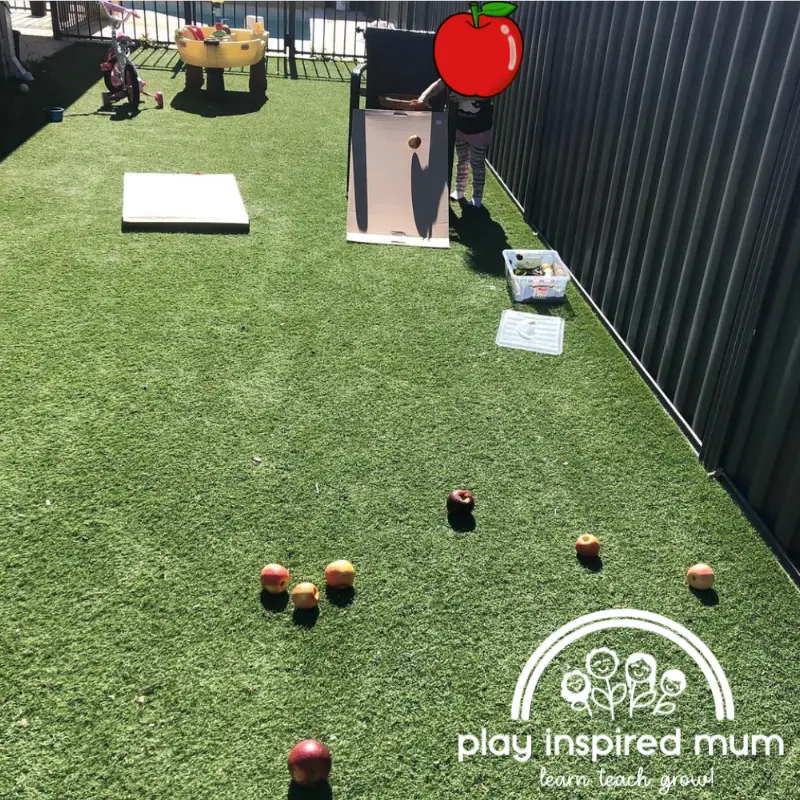
Rolling Out New Ideas
Inspiration struck us during those delightful apple rolling activities, didn’t it?
It was as if every laugh and excited cheer from our little learners fueled a new wave of creative thought.
They showed us how simple play ideas, like rolling apples, could ignite a passion for learning through play.
As autumn leaves turn, we’re reminded of the endless possibilities that the seasons offer for educational fun.
But why stop there?
Let’s keep the ball—or in this case, the apple—rolling.
Imagine transforming a sunny summer day into a science exploration.
We could experiment with water and have toddlers predict which objects float or sink.
Winter brings a wonderland of sensory experiences.
Think about filling bins with snow for indoor touch-and-feel stations, or perhaps crafting ice sculptures outdoors.
Spring, with its explosion of colours, invites us to plant seeds and observe the cause and effect as those seeds grow into blossoms.
Each season offers a unique backdrop for experimental play that engages both preschooler play ideas and those tailored for toddlers.
Yet the real beauty lies in how these activities, though simple, lay the groundwork for deep learning.
By encouraging cause and effect learning, making predictions, and fostering discussions about the natural world, we’re not just playing.
We’re preparing our young learners for a lifetime of curiosity and discovery.
So, let’s grab that ramp, set them up as makeshift sleds on a sandy hill, and dive into another season of fun, education, and unforgettable moments.
